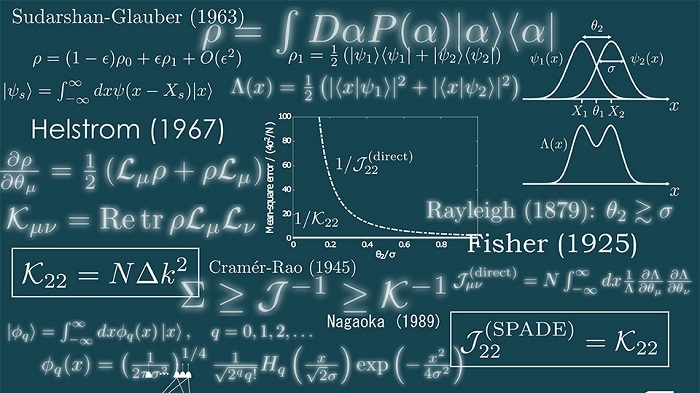30 August 2016
NUS engineers have discovered new optical techniques that can measure the separation between two light sources more precisely than ever before, potentially improving the resolution of microscopes and telescopes by orders of magnitude. With conventional imaging methods, the wave nature of light blurs the image, while the particle nature of light brings noise. These nuisances make it difficult to determine the separation between two light sources, hindering especially the study of fluorescent particles in microscopy and binary stars in astronomy.
Scientists have long considered this difficulty to be insurmountable, but Assistant Professor Tsang Man Kei, and his research fellows, Drs Ranjith Nair, and Xiao- Ming Lu, from the Department of Electrical and Computer Engineering, now show that it can be overcome. Using a powerful theory called quantum metrology, their calculations reveal that the light emitted by two typical light sources actually contains much more information about their separation than previously realised, and cleverer quantum optical methods can extract the full information, allowing the separation to be measured more accurately than ever before.
Since Asst Prof Tsang and his team members announced their discovery in an online preprint in November 2015, no less than four independent groups from Singapore, Canada, and Europe have performed experimental demonstrations of their theory. One of the groups is headed by Dr Alexander Ling, a principal investigator at the Centre for Quantum Technologies in Singapore.
Their calculations revealed that cleverer quantum optical methods can extract the full information contained in two typical light sources about their separation, allowing it to be more accurately measured.
The work was published in Physical Review X on 29 August 2016.
The seminal work by Asst Prof Tsang and his team has recently been published in Physical Review X, a highly selective journal by the American Physical Society. These rapid developments suggest that applications of their ideas in both microscopy and astronomy should not be far away; their next step is to explore how their techniques can be applied to the imaging of biological samples and to solve difficult problems in biology.















